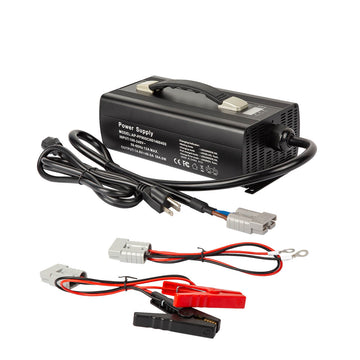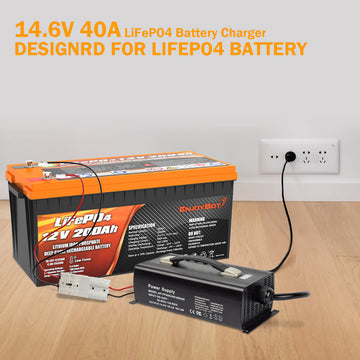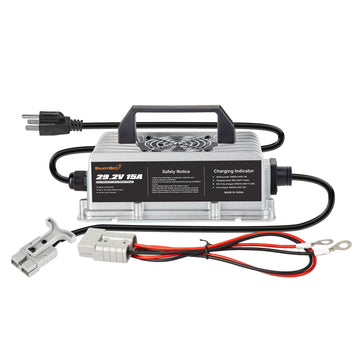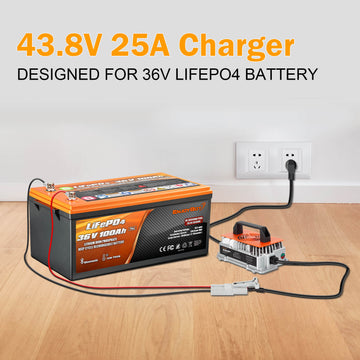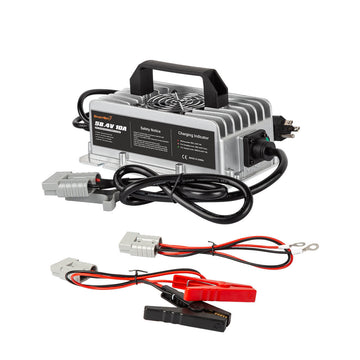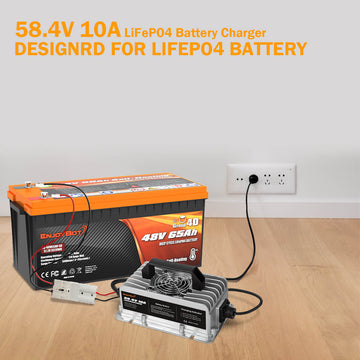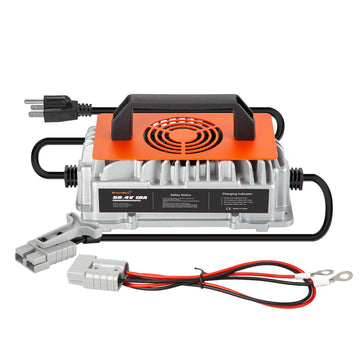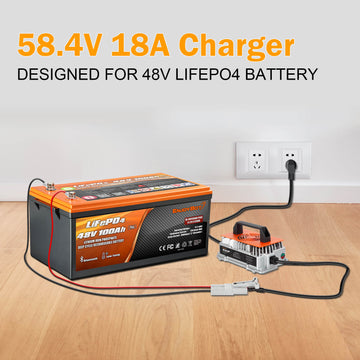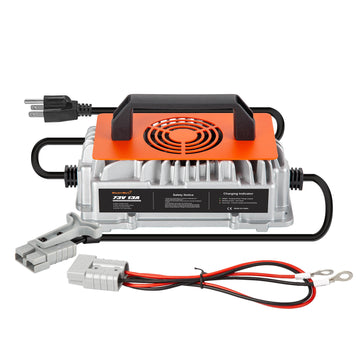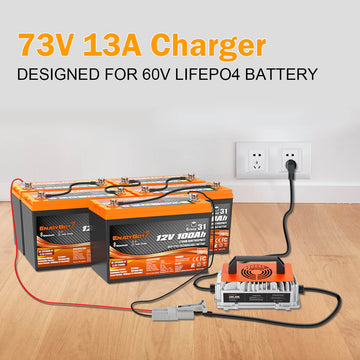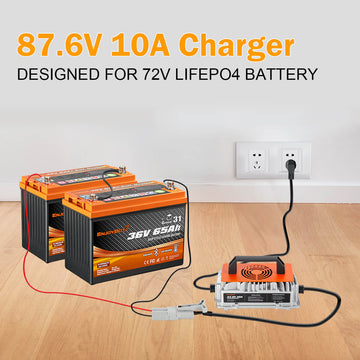What Is A LifePO4 Trolling Motor Battery?
What Is A LifePO4 Trolling Motor Battery?
You may have heard of a trolling motor battery on the fishing circuit. You may have even heard of some of their benefits from fellow fishing men. But what is a LifePO4 trolling motor battery? In this blog, you will learn what battery fits your trolling motor the most.
The Fact
Trolling Motors Batteries
When you go out on the water for a long day of fishing, the last thing you don't want to worry about is your trolling motor dying by lunchtime. Unless you can design it to deliver a slow, steady discharge of power, trolling motor battery needs to provide consistent power over a long period to keep that motor running.
Man fishing from a boat
Lead-acid wet cells, absorbed glass mat (AGM), and gel cell deep-cycle batteries were the best choice of marines for a very long time. There is now a new option available that offers some desirable advantages to people, and the benefits are far beyond the lead-acid and lithium battery. Let’s take a closer look at this new type of superstar LifePO4 trolling motor battery!

What is a LifePO4 Trolling Motor Battery?
A lifePO4 trolling motor battery is a lithium iron phosphate (LiFePO4) deep cycle battery. It provides slow, steady power for trolling motors. Most lithium iron phosphate trolling motor batteries feature 12 volts, now 24-volt batteries are available as well.
What kind of battery do I need for a trolling motor?
Batteries connected in series add their voltages, so two 12-volt batteries will provide 24 volts, and 3 will provide 36 volts. Batteries connected in parallel add their capacities, so two 12-volt batteries with 100 Ah capacities connected in parallel will provide 200 Ah at 12 volts.
Trolling motors are typically powered by 12, 24, or 36 volts, depending on the model.
For a 12-volt trolling motor, you can use one 12-volt battery or multiple batteries connected in parallel to extend your run time. For 24-volt trolling motor, you can either use one 24-volt battery or connect two batteries in series. For a 36-volt trolling motor, the most common configuration is that put 3 12-volt batteries connected in series.
Most trolling motors can be operated by any 12-volt wet cell, AGM, gel cell deep-cycle marine battery, or lithium iron phosphate battery. However, lithium iron phosphate batteries offer some significant advantages over other 12V battery types at this time.

Boat outfitting with LifePO4 trolling motor batteries
What are the advantages Of LifePO4 Trolling Motor Batteries?
LifePO4 trolling motor batteries are great for powering boats. They have advantages over lead-acid, gel cell, and AGM deep-cycle batteries. The biggest advantage is that they provide twice the run time on a single charge as a lead-acid battery of the same capacity. Other advantages are extended lifespan, increased efficiency, and significant weight reduction. The LifePO4 batteries also have a longer warranty, and a built-in battery management system (called BMS).
Longer Run Time
While you use the traditional lead-acid battery for trolling motor, the battery's voltage will drop as its discharged. while your battery's amp-hour capacity is used at 50%, the voltage will have dropped enough that it can no longer power your trolling motor.
LifePO4 battery has a flatter voltage curve which means it doesn't experience this same voltage drop as you use the traditional lead-acid battery. Due to the voltage remaining consistent throughout the discharge cycle, you can use the entire amp-hour capacity before the motor stops running. Versus a lead-acid battery with the same amp-hour capacity, the flat voltage curve effectively double your run time on a LifePO4 battery.
Longer Lifespan
Since lead-acid batteries repeatedly go through discharge and recharge cycles, they can never be fully charged to their capacity. by over time, this causes the battery to wear out until the voltage drop mentioned above is too great. Then the battery is unable to provide enough voltage for your motor any longer, even on a full charge.
LifePO4 batteries do not last forever guarantee, but they typically last for ten times as long as lead-acid batteries. This is because of their flat voltage curve, which minimizes the amount of damage to their lifespan during deep discharges. This is the key advantage of being a true deep cycle battery. Different from all lead-acid batteries that get damaged with each deep discharge, minimal degradation to the life cycle will occur if you use them up each time.
Weighs Less
The LifePO4 battery is about half the weight of the regular deep-cycle marine battery. This is another advantage of the LifePO4 battery.
The weight of the gear and passengers in the boat impacts the craft’s handling and performance. It can even cause safety and legal issues if overweight. So the weight is a big deal for boaters!
A typical marine lead-acid battery weighs 60-70 pounds. By contrast, a marine LifePO4 battery weighs about 24 pounds. The LifePO4 battery system could save you over 100 pounds for a 36-volt motor requiring three 12-volt batteries connected in series. That’s a lot of fish!
More Efficient Power & Charging
When you combine the weight and additional run time from LifePO4 batteries, you will end up with a much more efficient system. If you compare the run time per pound of battery, you will get about four times the efficiency.
Additionally, the LifePO4 battery can fully charge in about 2 hours which is significantly faster than the lead-acid battery.
Built-in Battery Management System
LifePO4 trolling motor battery comes with a battery management system (called BMS). This internal BMS system monitors and manages the battery from temperatures, performance, and charge rates to keep the battery operating safely and increase its longevity.
The Lead-acid batteries can have internal shorts, damage from high or low temperatures, even fire in high temp, and, as noted above, suffer from the effect of improper charging. However, the lead-acid battery doesn't have a battery management system to monitor performance or failsafe.
5 to 7 Years Warranty
LifePO4 battery generally comes with a 5-7 years warranty, but the Enjoybot lifePO4 battery has a 10 years warranty, which is a great advantage to people. Compared with a lead-acid battery, which usually only has a 1-2 year limited warranty. This is a clear indication that LifePO4 battery manufacturers anticipate a very long lifespan.

Does the LifePO4 Trolling Motor Battery Worth It?
Traditional deep-cycle batteries cost about one-third of what LifePO4 batteries of the same capacity cost. However, when you factor in that LifePO4 batteries last 50-100 times longer, provide double the run time, perform safety, and cut your battery weight in half, the upfront cost savings don’t seem worth it.
Over ten years, you will possibly end up replacing your lead-acid batteries enough times to recover the cost of switching to LifePO4 batteries. As a bonus, your boat will be lighter and you are going to have more time out on the water doing what you love.

Head For The Water With Confidence
When you are ready to head for the water with your fishing gear, have reliable LifePO4 trolling motor batteries on board that will let you fish from morning to night without worrying about your trolling motor’s battery dying. That’s a win for any fishing enthusiast!
What happens if you charge a LifePO4 battery with a regular charger?
Many lead-acid chargers have desulphation and equalization stages built-in, which will pulse high voltages of 15.3-15.8V into the battery. This is important to correctly charge and maintain lead-acid batteries to avoid stratification of the electrolyte, and to ensure proper voltage equalization of the cells, but the Lead-acid battery charger is not suitable for LiFePO4 batteries. It can heavily reduce the life of the cells since regular over-voltage charging or cause irreversible damage to the battery.
How long does a 100ah LifePO4 battery last on trolling motor?
Around 25 hours
According to the technical terms, a 100 amp-hour rated battery can deliver 100 amp hours of current to a trolling motor. If a motor was run at low speed and pulling 4 amps (100 amp-hour rating / 4 amps = 25 hours), the battery should last around 25 hours.
What size of lithium iron phosphate battery do I need?
The lithium iron phosphate (LifePO4)battery requires fewer Amp-hours
For example, on a 12V system, you would need a 12V 100Ah lithium iron phosphate battery to support a load of 1200Wh. On the other hand, a lead-acid battery would require double Ah to maintain 50 percent DOD per cycle.

How to make the battery for trolling motor last longer?
Maximizing Battery Life.
It would be helpful if you are fully discharged peruse and need fully recharge the trolling motor battery as soon as possible after use.
Is LiFePO4 the same as lithium-ion?
Not at all, the LiFePO4 battery has a cycle life of over 4x to the lithium-ion polymer batteries.
Do I need a special charger for LiFePO4?
To keep the battery working nicely, we suggest people use a LifePO4 battery charger with a voltage of 14V to 14.6V is required.
How long does a LifePO4 battery last?
Lithium iron phosphate (LifePO4) batteries usually are rated for approximately 3000 to 5000 charge cycles with an impressive 80% - 98% depth of charge.
If you fully discharge each use and fully recharge the battery as soon as possible after use, the battery may be extended over 12 years.
Can you overcharge a LiFePO4 battery?
The answer is NO! The most common reason for the premature failure of the LifePO4 battery is overcharging. Even if the overcharging happens only once, the result can impact the lifespan.
Can I charge a LiFePO4 battery while using it?
Yes, you can. The charge controller will still put out its maximum when the motor is used, and it will cause the battery to sag lower. While using, the charge controller will allow whatever the panel is putting out to flow into the batteries.
How do you charge LiFePO4 trolling motor batteries?
The ideal way is that charge the LifePO4 battery with a lithium iron phosphate battery charger because it will be programmed with the appropriate voltage limits. GEL and AGM charge profiles typically fall within the voltage limits of a LifePO4 battery.

How to store LiFePO4 trolling motor batteries?
Suggested storage temperature: -10 to +50°C (14 to 122°F)
When should I charge my LiFePO4 battery?
The LifePO4 batteries do not charge if they are not fully discharged after each use. The LifePO4 batteries won't be damaged when left in a partial state of charge(PSOC). You can charge the LifePO4 batteries after each use, or the batteries have been discharged up to 80% DOD(20% SOC).
How safe are LiFePO4 batteries?
As far as now, the LiFePO4 batteries are the safest type of lithium iron phosphate batteries, as they won't overheat, and even if punctured they won't catch on fire. The cathode material in the LiFePO4 battery is not hazardous, so poses no negative health hazards or environmental hazards.
Why are LiFePO4 batteries safer?
The lifePO4 battery is more chemically stable, and it is incombustible, which means that it is not prone to thermal runaway. In addition. So LifePO4 battery can withstand high temperatures without decomposing, and it is not flammable.
Are all LiFePO4 batteries the same?
Not all LiFePo4 batteries are the same. This is because they are built with different quality control checks.
Conclusion
The LifePO4 battery is the best technology battery as far as now, which covers all benefits of lead-acid batteries and other lithium batteries, they are extended run time, operating stable, less weight, longer battery lifespan, shorter charging time, deep cycle rechargeable, no maintenance, extremely safe, etc.

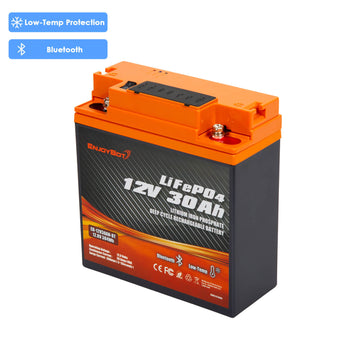
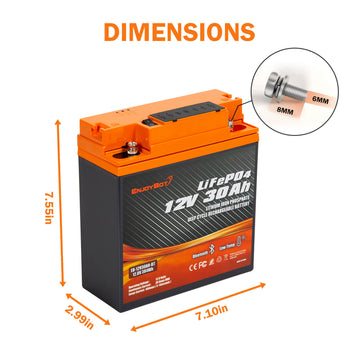
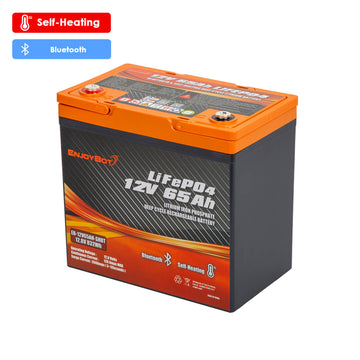
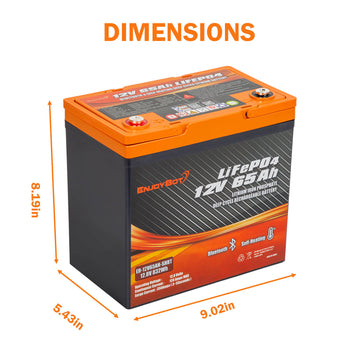
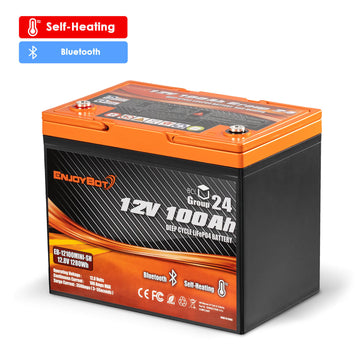
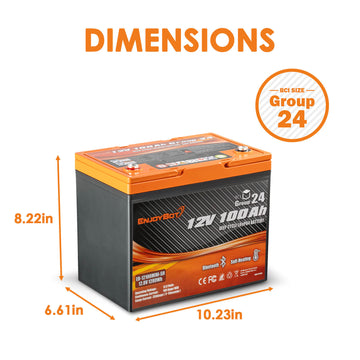

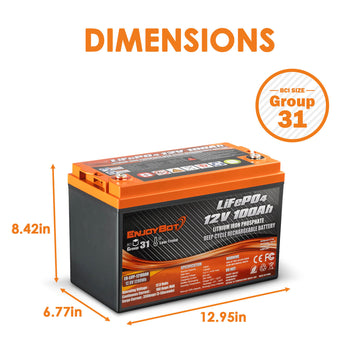

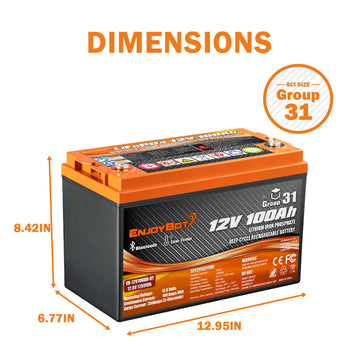

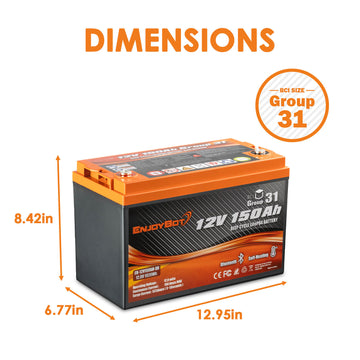


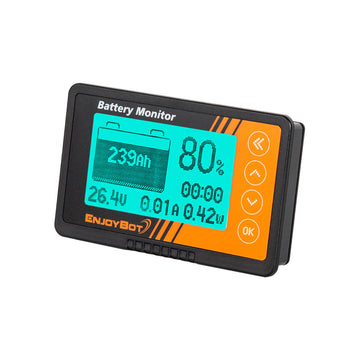
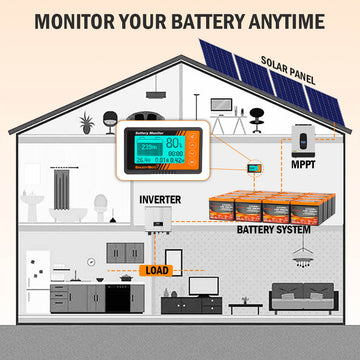
![[Upgraded Version] Enjoybot 14.6V 20A Waterproof Mountable LiFePO4 Lithium Battery Charger For 12V LiFePO4 Battery](http://enjoybotbattery.myshopify.com/cdn/shop/files/14.6V_20A_Waterproof_Battery_Charger_1_360x.jpg?v=1752565609)
![[Upgraded Version] Enjoybot 14.6V 20A Waterproof Mountable LiFePO4 Lithium Battery Charger For 12V LiFePO4 Battery](http://enjoybotbattery.myshopify.com/cdn/shop/files/14.6V_20A_Waterproof_Battery_Charger_2_360x.jpg?v=1752637374)
